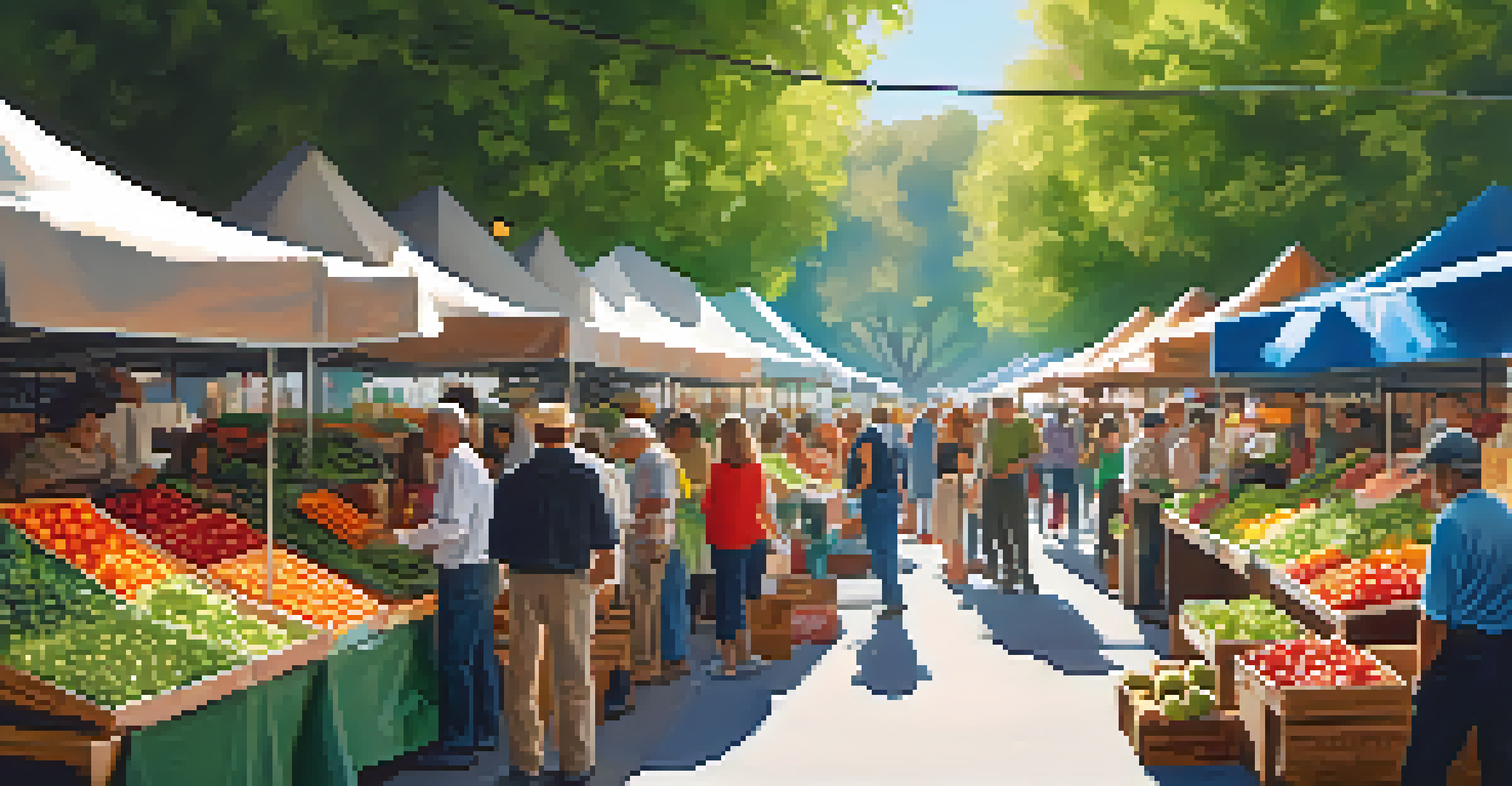The Role of Props: Enhancing Storytelling Through Visual Elements

Understanding the Importance of Props in Storytelling
Props are more than just objects; they are essential tools that enhance storytelling. They help to create a visual narrative that supports the plot and character development. Think of a detective's magnifying glass or a knight's sword; these items convey significant information about the characters and their journeys.
Props are the silent storytellers, enhancing the narrative without uttering a word.
By carefully selecting props, creators can evoke emotions and set the tone of the story. For instance, a simple teddy bear can symbolize childhood innocence, while a broken mirror might represent fractured identities. Props can subtly communicate themes without the need for lengthy exposition.
Ultimately, props bridge the gap between the audience and the narrative. They provide tangible connections to the story, making it easier for viewers to immerse themselves in the world being presented. The right props can turn an ordinary scene into a memorable moment.
How Props Contribute to Character Development
Props play a significant role in revealing character traits and motivations. A character's choice of items can speak volumes about their personality. For example, a cluttered desk filled with books might suggest a studious, disorganized character, while a minimalist setup could indicate simplicity or a lack of attachment.

Moreover, props can serve as extensions of the characters themselves. A superhero’s cape or a villain’s weapon not only adds flair but also enhances their identity within the narrative. These objects become symbols that resonate with the audience, fostering a deeper connection to the characters.
Props Enhance Storytelling Depth
Props serve as vital tools that enhance narratives by evoking emotions, establishing setting, and providing character insights.
As audiences observe how characters interact with their props, they gain insights into their emotions and relationships. This dynamic interaction enriches the storytelling experience, allowing viewers to engage more fully with the characters' journeys.
The Role of Props in Setting the Scene
Setting is crucial in storytelling, and props are vital elements that help establish it. The right props can transport audiences to different times and places, creating a vivid backdrop for the narrative. For instance, a vintage gramophone immediately evokes a sense of nostalgia, while futuristic gadgets can set a sci-fi atmosphere.
Every object is a potential storyteller; it just needs the right context to reveal its tale.
In film and theater, the careful arrangement of props can set the stage for tension or excitement. A dimly lit room cluttered with ominous objects can create a sense of foreboding, while an open, sunlit space filled with colorful items can evoke joy and freedom. Props help to shape the emotional landscape of the story.
By thoughtfully incorporating props, creators can craft immersive worlds that capture the audience's imagination. This attention to detail enhances the overall storytelling experience, making it more engaging and memorable.
Symbolism: The Deeper Meaning Behind Props
Props often carry symbolic meanings that add layers to the narrative. For example, a red rose can symbolize love and passion, while a wilted flower might represent lost love or decay. These symbols can deepen the audience's understanding of the story and its themes.
Writers and directors can use props to foreshadow events or reveal character arcs. A character's growing collection of trophies might symbolize ambition or obsession, hinting at their eventual downfall. This clever use of props can make the storytelling more engaging and thought-provoking.
Symbolism Adds Layers to Narratives
The use of props as symbols can deepen audience understanding of themes and foreshadow character arcs.
Through symbolism, props become integral to the story's emotional and thematic resonance. They encourage audiences to look beyond the surface and engage with the narrative on a more profound level.
Props in Different Mediums: Film, Theater, and Literature
While props are often associated with visual media like film and theater, they also play a role in literature. Descriptive language can act as a prop, helping readers visualize characters and settings. For instance, mentioning a character's worn-out shoes can evoke their struggles and journey.
In film and theater, props are tangible elements that actors interact with, enhancing their performances and the overall experience. A well-placed prop can serve as a catalyst for action, driving the plot forward and creating memorable moments.
Each medium offers unique opportunities for props to shine. Whether through vivid descriptions in literature or physical interactions in performance, props enrich the storytelling experience across the board.
Challenges of Using Props Effectively
While props can enhance storytelling, their use also comes with challenges. Overloading a scene with too many props can distract from the narrative, making it hard for the audience to focus. It's essential to strike a balance, ensuring that each prop serves a purpose.
Additionally, props must align with the story's tone and setting. An anachronistic item in a historical drama might confuse the audience, breaking immersion. Careful research and consideration are crucial for effective prop integration.
Future of Props Embraces Innovation
As technology advances, props are evolving to create immersive experiences that blend physical and digital elements in storytelling.
Lastly, the physicality of props can be challenging, especially in live performances. Actors must be skilled in handling props to maintain the flow of the story without drawing attention to themselves. When done right, however, props can elevate the narrative to new heights.
Innovative Uses of Props in Modern Storytelling
With advancements in technology, props are evolving in exciting ways. Augmented reality (AR) and virtual reality (VR) are allowing creators to incorporate digital props that can interact with physical elements. This innovation opens up new avenues for storytelling and audience engagement.
Moreover, modern storytellers are experimenting with unconventional props to challenge traditional narratives. For example, using everyday objects in unexpected ways can provoke thought and inspire deeper connections with the audience. A simple cup could become a symbol of connection or isolation, depending on its context.

As storytelling continues to evolve, so does the role of props. By embracing creativity and innovation, creators can push boundaries and redefine how props enhance narratives.
The Future of Props in Storytelling
Looking ahead, the role of props in storytelling is set to expand even further. As audiences become more tech-savvy, there will be an increasing demand for immersive experiences that blend physical and digital elements. Props will play a crucial role in this evolution, helping to create more engaging narratives.
In addition, sustainability is becoming a priority in storytelling. Creators are exploring ways to use eco-friendly materials for props, ensuring that their stories resonate with socially conscious audiences. This shift not only reflects changing values but also adds a layer of depth to the storytelling process.
Ultimately, the future of props in storytelling is bright. As innovative techniques and materials emerge, props will continue to enrich narratives, deepen character development, and captivate audiences in new and exciting ways.